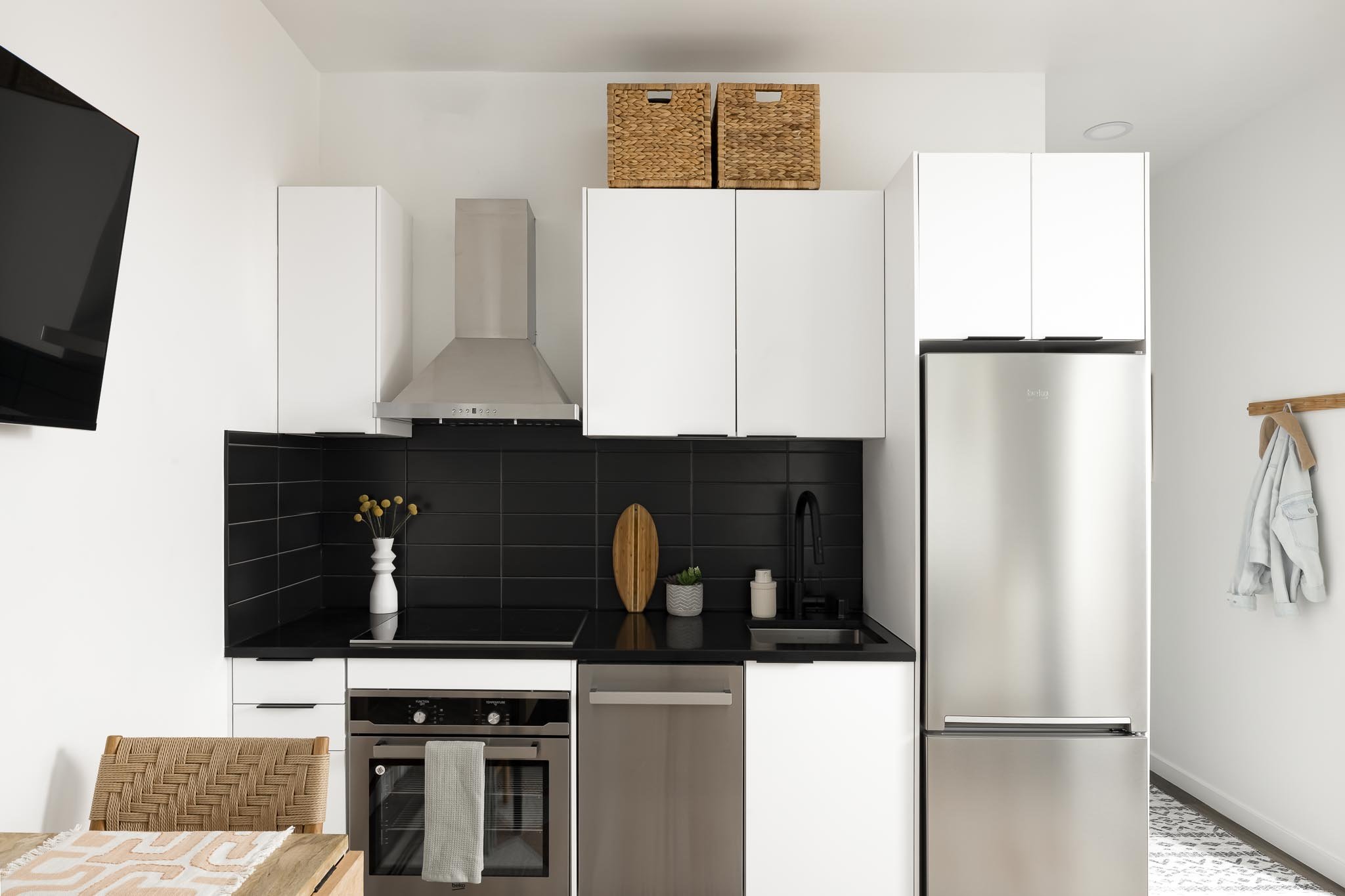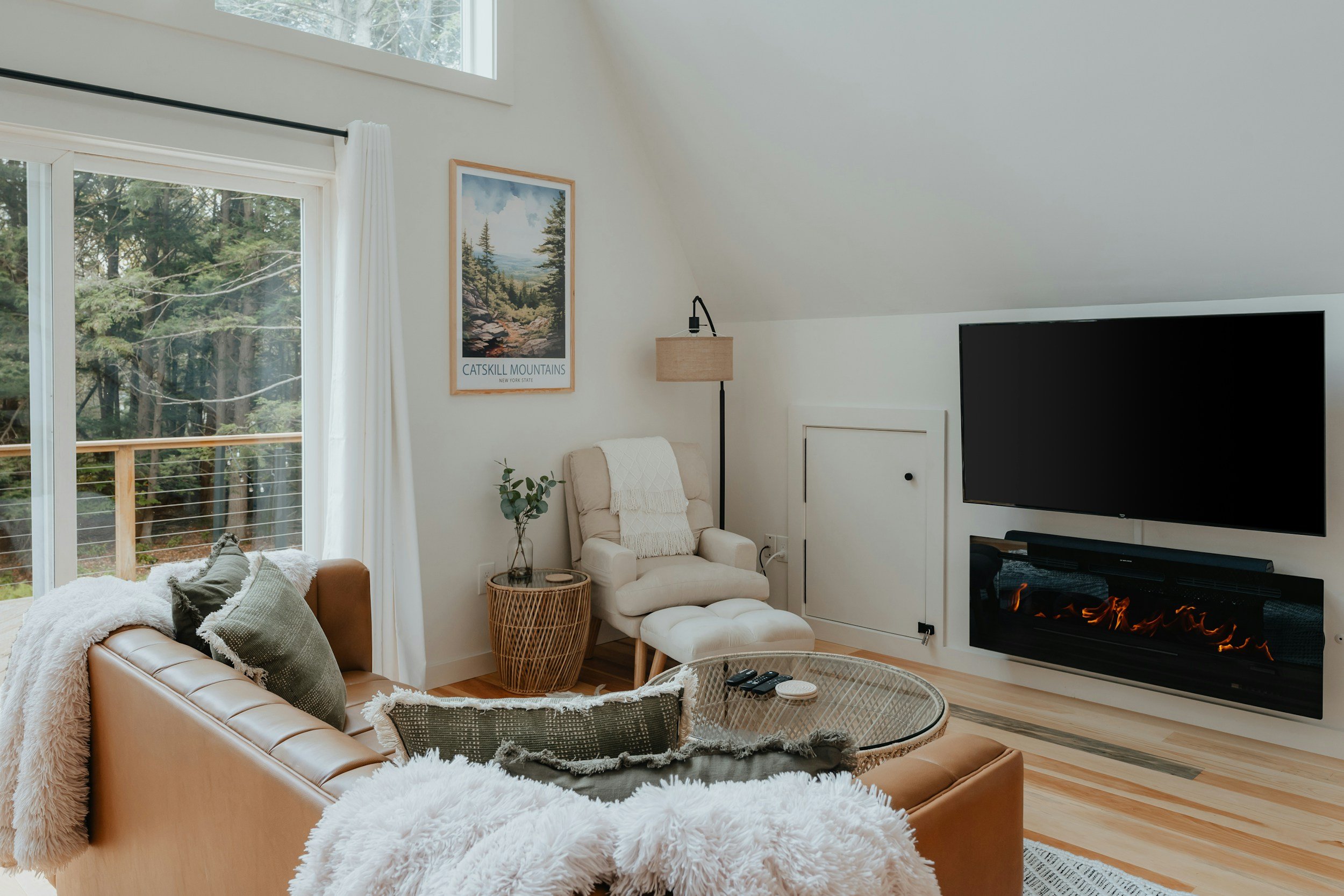The Biggest Challenges of Small Space Living—and How to Solve Them
Living in a small space can be both charming and challenging. On the one hand, a smaller home often means lower costs, less to clean, and a cozy vibe. On the other hand, small spaces can quickly feel cramped, cluttered, and impractical if you’re not strategic about how you use them. Whether you’re in a tiny apartment, a compact house, or even a single room, the struggles of making everything fit while still keeping your space functional and stylish are very real.
As an interior designer with a passion for small-space transformations, I’ve helped countless clients turn their cramped quarters into homes that feel spacious, organized, and uniquely theirs. In this post, we’ll dive into the biggest challenges of small space living—clutter, storage, awkward layouts, and more—and, most importantly, how to solve them.
SUKKHA INTERIOR DESIGN
Challenge 1: The Battle Against Clutter
Clutter is the arch-nemesis of small spaces. Even just a few stray items can make a small room feel chaotic and overwhelming. When every surface is covered and storage is maxed out, it’s hard to relax, let alone entertain guests.
The Solution: Declutter and Stay Intentional
Decluttering isn’t just about getting rid of stuff—it’s about creating a home that feels peaceful and purposeful. Start by tackling one area at a time:
Purge Ruthlessly: Ask yourself, “Do I use this? Do I love it? Does it fit my current lifestyle?” If the answer is no, let it go.
Adopt Minimalist Habits: Use the “one in, one out” rule—when something new comes into your home, something else should go.
Organize with Purpose: Once you’ve decluttered, organize what’s left in a way that makes sense for your daily life. Use bins, baskets, and drawer dividers to keep everything in its place.
One of my clients, a busy professional living in a small one-bedroom apartment, was drowning in paper clutter. We tackled her problem with a combination of digital filing and stylish storage boxes. Her apartment went from feeling chaotic to calm instantly.
Challenge 2: The Great Storage Dilemma
If you’ve ever complained about not having enough storage, you’re not alone. Closets and cabinets fill up fast in a small home, and before you know it, you’re running out of places to put things.
The Solution: Think Vertical and Multi-Purpose
In a small space, you have to think beyond traditional storage options. Here’s how:
Go Vertical: Use your walls for storage by installing shelves, pegboards, or hooks. Tall bookcases and wall-mounted organizers make great use of otherwise wasted space.
Invest in Multi-Purpose Furniture: Look for pieces that serve double duty, like a bed with built-in drawers, a coffee table with hidden storage, or an ottoman that opens up to store blankets or books.
Use Underutilized Spaces: Don’t overlook areas like under the bed, behind doors, or even above cabinets. Clear bins and vacuum-sealed bags are perfect for storing seasonal items.
One of my favorite storage hacks involves turning awkward spaces into hidden gems. I once helped a client transform the space under her staircase into a combination storage area and mini home office. It became a functional feature that added tons of value to her day to day living.
Challenge 3: Awkward Layouts
Small spaces often come with tricky layouts—narrow hallways, weird nooks, or open floor plans that make it hard to create distinct areas. It can feel impossible to fit everything you need while still maintaining flow and functionality.
SUKKHA INTERIOR DESIGN
The Solution: Design with Purpose
Solving layout issues requires strategic planning. Here’s how to make your space work for you:
Create Zones: Use rugs, furniture placement, or even lighting to define different areas within one room. For example, a small living room can also double as a workspace with the addition of a stylish desk and a comfy chair.
Use Flexible Furniture: A drop-leaf table, foldable chairs, or a Murphy bed can transform your space as needed.
Custom Solutions: For especially tricky layouts, consider custom furniture or built-ins that fit the dimensions of your space perfectly.
I once worked with a couple who had a long, narrow living room. By dividing it into zones—a cozy seating area on one side and a reading nook on the other—we made the space flow better and feel more functional.
Challenge 4: Limited Privacy
If you live in a small home, especially one you share with others, finding personal space can feel impossible. Whether you’re working from home, raising kids, or just need a moment to yourself, lack of privacy is a common pain point.
The Solution: Carve Out Quiet Corners
Even in the smallest spaces, there are ways to create privacy:
Room Dividers: Folding screens, curtains, or strategically placed furniture can act as barriers between shared spaces.
Soundproofing: Rugs, heavy curtains, and fabric wall hangings can help dampen noise and make your space feel more peaceful.
Personal Nooks: Designate a small corner or area just for you, like a comfy chair with a side table for reading or a compact desk for work.
One family I worked with wanted a quiet space for their teenage son to study without taking up an entire room. We added a floating desk and shelves in a hallway nook, complete with a task lamp and corkboard. It became his go-to spot for focusing without distractions.
Challenge 5: Making It Feel Like Home
Small spaces can sometimes feel temporary or impersonal, especially if you’re cramming too much into a tiny area. Creating a home that feels warm and inviting takes intentional effort.
The Solution: Add Personality
Making a small space feel like you doesn’t require a big budget—just thoughtful choices:
Stick to a Cohesive Style: Choose a color palette and design style that resonates with you and use it consistently throughout your space.
Incorporate Textures: Layering rugs, pillows, and throws adds coziness and depth.
Showcase Meaningful Decor: Display photos, art, or heirlooms that tell your story.
I once worked with a client who had a studio apartment that felt cold and uninspired. By adding a gallery wall of travel photos, a plush area rug, and some greenery, we turned it into a vibrant and personal space she loved coming home to.
Challenge 6: Keeping It Functional
In small spaces, it’s easy for function to take a backseat to aesthetics—or vice versa. But you need your home to work and look good.
The Solution: Prioritize Versatility
Here’s how to keep your space both beautiful and functional:
Choose Scaled Furniture: Oversized pieces can overwhelm a small room. Look for furniture that fits your space without sacrificing comfort.
Invest in Quality Pieces: In a small home, every item counts. Choose furniture and decor that are durable and timeless.
Stay Flexible: Multi-purpose furniture, movable partitions, and stackable seating give you more options as your needs change.
One couple I worked with in NYC wanted their tiny living room to double as an entertainment space. We incorporated a modular sectional that could be rearranged for movie nights or pulled apart to accommodate guests moving in the space.
Bonus Tips for Small Space Living
Here are a few extra tricks to maximize your small space:
Use Mirrors: Mirrors reflect light and make any room feel larger.
Maximize Lighting: Layer lighting with overhead fixtures, table lamps, and wall sconces to brighten your space.
Keep It Clean: A tidy home feels bigger and more welcoming.
Ready to Love Your Small Space?
Living in a small space doesn’t mean sacrificing style, comfort, or functionality. With the right strategies, you can transform even the tiniest home into a place that feels spacious, organized, and uniquely yours.
If you’re feeling stuck or overwhelmed, I’m here to help. As an interior designer specializing in small spaces, I can help you identify solutions that fit your lifestyle and budget.
Schedule a consultation today, and let’s turn your small space into your dream home!
If you are looking to transform your space or just want to say hi, I'd love to connect! Reach out here!
READ MORE
FOLLOW ON INSTAGRAM
BY SARAH BRONSTEIN

























